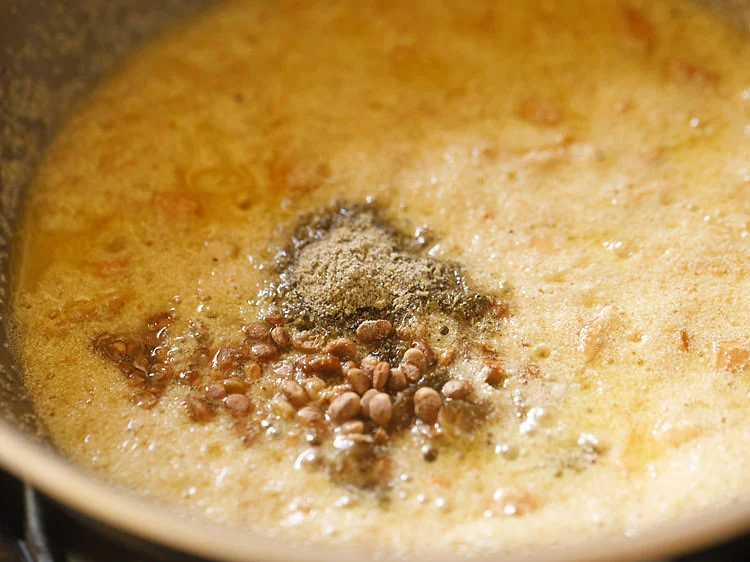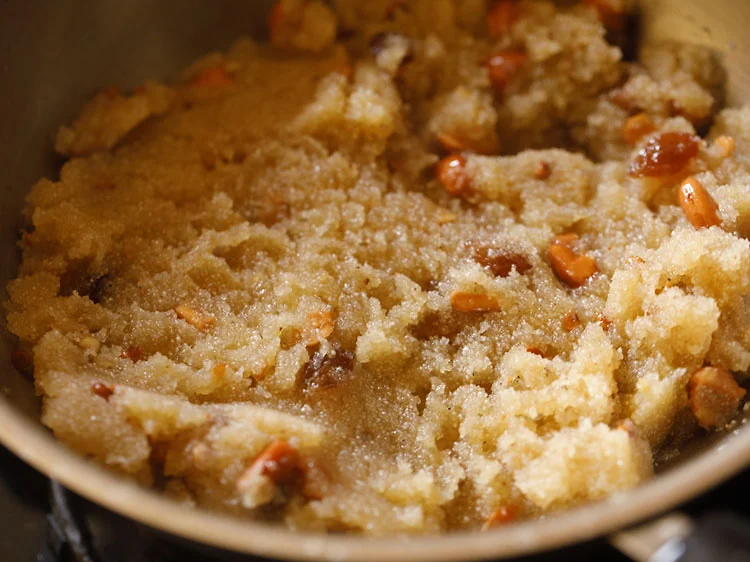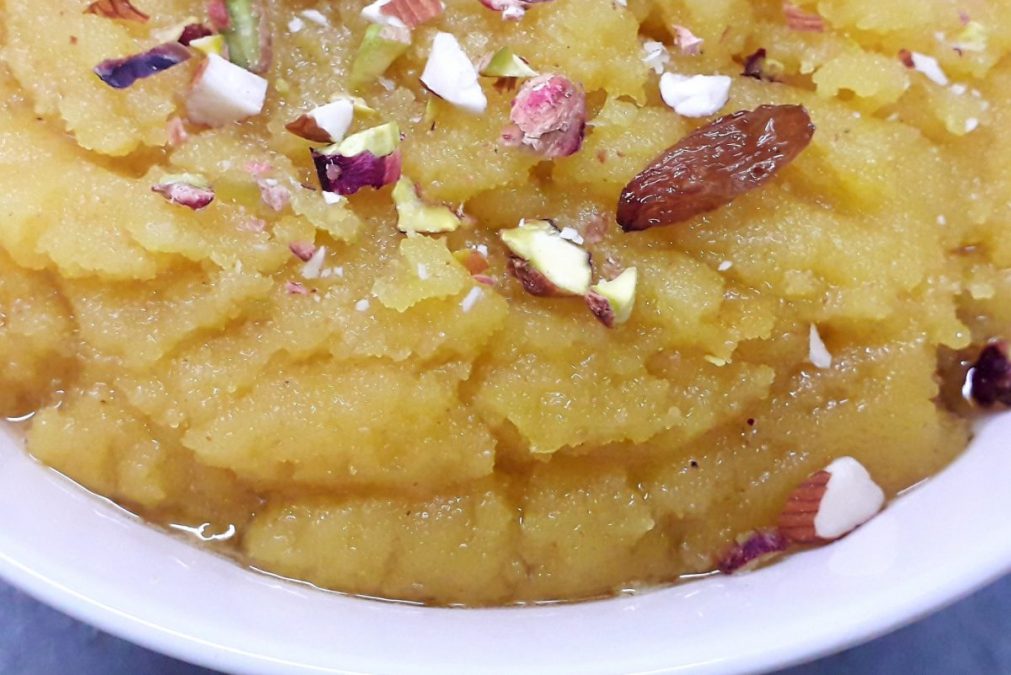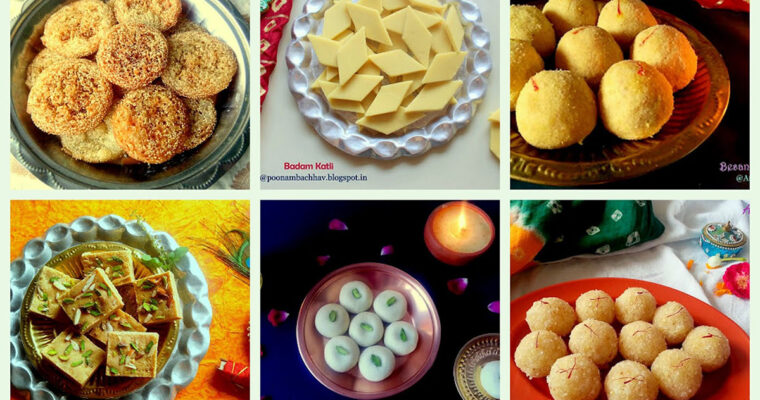Introducing Suji ka Halwa(porridge), a delectable Pakistani dessert crafted from fine semolina (Suji) or cream of wheat (Suji), sugar, ghee, almonds, and cardamom powder. Known for its rich flavor, Suji ka Halwa is a cherished sweet in Pakistani cuisine. This 15-minute recipe is quick and easy, making it perfect for family gatherings, special occasions, and festivals. Discover the authentic Suji Halwa recipe and learn how to make this beloved dessert, also known as Sooji Halwa. Indulge in the delightful flavors of Suji ka Halwa with our time-honored family special recipe.
Variations in Suji Ka Halwa(porridge) Recipe:
Suji ka halwa is also known in Pakistani Cuisine as Suji Halwa and just Halwa in some regions of South Punjab. The process of preparation is nearly the same, with a few items swapped in and out.
However, the basic ingredient is still Suji or semolina. Milk Kesari is a version of a dish that uses milk instead of water. Cardamom powder is commonly used as a flavour.
This halwa is also suitable for traditional events or auspicious events. It could also be a special occasion like Shab-e-Barat or Shab-e-Mairaj or a religious rite held at your home, or you simply want something delicious. It’s also delicious as a sweet breakfast or dessert after dinner.
You don’t need a reason or an occasion to make this easy and quick halwa recipe.
During religious festivals, we frequently make Suji halwa with puri. Also prepared is Kala chana. We give Kala chana, suji halwa, and puri to the children for their joy.
Orange synthetic colour is commonly applied to Suji, which is popular in Pakistan. However, natural colouring agents such as saffron threads or powder can be used to get the same effect.
In sooji halwa, such as this Saffron Suji Halwa, saffron threads or Kesar can be used.
Fractions in Suji Ka Halwa(porridge) Recipe:
On celebratory or religious occasions, sooji halwa is sometimes cooked in large quantities. If you want to cook a huge batch, you’ll need to stick to a specific percentage.
In a cup or glass measure, the proportions of suji, sugar, water, and ghee are 1:1:2:0.5. I put a little less ghee and sugar than this percentage calls for.
- Sugar: I add 23 or 34 cups of sugar to 1 cup of sooji or Suji. As a result, the suji halwa is less sweet or just sweet. 1 cup of sugar produces an extremely sweet flavour.
- Ghee: I also use 2/3 cup ghee in place of 1 cup suji. 2/3 cup of ghee is a decent quantity for me. If you like, you may use less or more ghee.
- Water: For 1 cup of suji, I use 2.5 cups of water. You might also add 2 cups of water. Depending on the quality of the suji and whether you desire a pudding-like smooth consistency, you may add more water.
http://pakistanifoodbox.com/2021/10/18/the-best-kitchen-compost-bins-under-50-at-amazon-make-your-eco-system-healthy-and-clean/
Suji Ka Halwa Recipe Method:
Suji Roasting:
1. In a kadahi or a thick-bottomed pan, melt 13 cups of ghee. Reduce the heat to a low or medium setting. If you don’t use a heavy pan, the suji will burn.
While the ghee is heating up, keep the sugar and water boiling in a separate pan on a different burner. The steps are listed below:
“Making sugar solution for halwa.”

2. Mix in 12 cup sooji (semolina). Instead of using the coarser sooji, use the finer variety.
3. Add 10 to 12 halved or whole cashews as well.
4. Combine everything and begin roasting the sooji and cashews.
5. Stir the sooji constantly so that it does not adhere to the pan and roasts evenly.
6. Roast the sooji until the ghee separates and the cashews become golden. The suji or Suji’s hue should not become brown. In addition, the scent of suji and ghee will fill your kitchen.

Suji takes around 7 to 8 minutes to roast on a low flame. This step is crucial because if the sooji is not properly roasted, the halwa will not have the desired texture. The halwa will have a faint raw flavour.
Note that by the time the cashews turn golden, the suji should be done as well. So keep swirling until the cashews turn golden brown.
7. Add 1 teaspoon chironji (optional), 2 tablespoons golden raisins (kishmish), and a sprinkle of edible camphor after the suji has been well-cooked (optional).
8. Add 12 teaspoon cardamom powder next (4 to 5 green cardamoms, powdered in a mortar-pestle, husks discarded). Sliced almonds or pistachios can also be added.

Making the sugar solution for the halwa:
At the same time that you’re roasting the sooji in the ghee, put 13 cups of sugar in another skillet or pot.
Because I used raw sugar, the water is not translucent but rather a light brown tint. In virtually all of my recipes, I use unrefined raw sugar. White sugar can be used in this halwa recipe. White sugar can be used in the same amount.

11. Pour 1.25 cups of water into the container.
12. Place the pan over medium-low to medium heat on the stovetop. Stir with a spoon to dissolve the sugar.
13. Bring the sugar and water mixture to a boil.
Making suji sheera or suji ka halwa:

14. Once the raisins, cardamom powder, and Kalwanji have been thoroughly mixed, slowly pour the boiling and bubbling sugar solution into the ghee-sooji mixture, stirring constantly. As the mixture sizzles and splutters, pour with caution.
15. Mix well to avoid the formation of lumps. If there are any lumps, break them up with a spoon.
16. The sooji grains will expand as they absorb the water.
17. The liquid will begin to thicken. Continue to stir often.
18. The halwa mixture has thickened in the shot below, but it is still soft, moist, and has a pudding-like consistency.

19. Once all of the water has been absorbed, the texture will alter. Ghee will also be seen on the sides.
Pouring of sooji halwa- Suji Ka Halwa Recipe:

20. Continue to mix and heat until the suji sheera reaches the desired texture, as shown below. The halwa should leave the edges of the pan once all of the water has been absorbed.
Pour the sooji halwa mixture into a greased pan or tray right away whether you want to form slices, cubes, or squares. Cut into diamond-shaped or square pieces when warm or cool.

21. Suji ka halwa can be served hot, warm, or cold. Refrigerate any leftover suji halwa. Warm in a small skillet or microwave before serving.
Suji ka halwa, also known as Sheera, is a sweet snack. It is suitable for serving after a meal. It can also be eaten as a dessert or with poori.
Making the Best Suji Halwa:
Suji or semolina Use the fine kind of suji to make halwa since it has a pleasant flavour. Bombay suji can also be used. Check to see if your sooji is fresh and free of insects or mould. The sooji should be at the end of its shelf life.
Suji ka halwa is a sweet snack also known as Sheera. It is appropriate to serve after a meal. It’s also good as a dessert or served with poori.
Making the Best Suji Halwa:
Type of suji or suji: To prepare halwa, use fine suji since it has a lovely flavour. You may also use Bombay suji. Examine your sooji for freshness and the presence of insects or mould. The sooji should be past its sell-by date.

Suji ka halwa is a sweet snack also known as Sheera. It is appropriate to serve after a meal. It’s also good as a dessert or served with poori.
How to Make the Best Suji Halwa:

Type of suji: To prepare halwa, use fine suji since it has a lovely flavour. You may also use Bombay suji. Examine your sooji for freshness and the presence of insects or mould. The sooji should be past its sell-by date.
Dried Fruits and Nuts: You can use any dry fruits and nuts you choose. Cashews, almonds, kalonji, and golden raisins are commonly included. Pistachios are occasionally included.
Suji ka halwa is a traditional Pakistani confection made of fine semolina (SUJI) or cream of wheat (SUJI), sugar, ghee, almonds, and cardamom powder. This sweet is known as SUJI KA HALWA in Pakistani Dessert cuisine. Suji and Sooji are all names for semolina. This quick and easy halwa dish comes together in just 15 minutes. The dish I'm sharing is a family special recipe that we've been serving at family gatherings, special occasions, and festivals for decades.Pakistani Suji Ka Halwa Home Made Special Recipe

Ingredients
Directions


